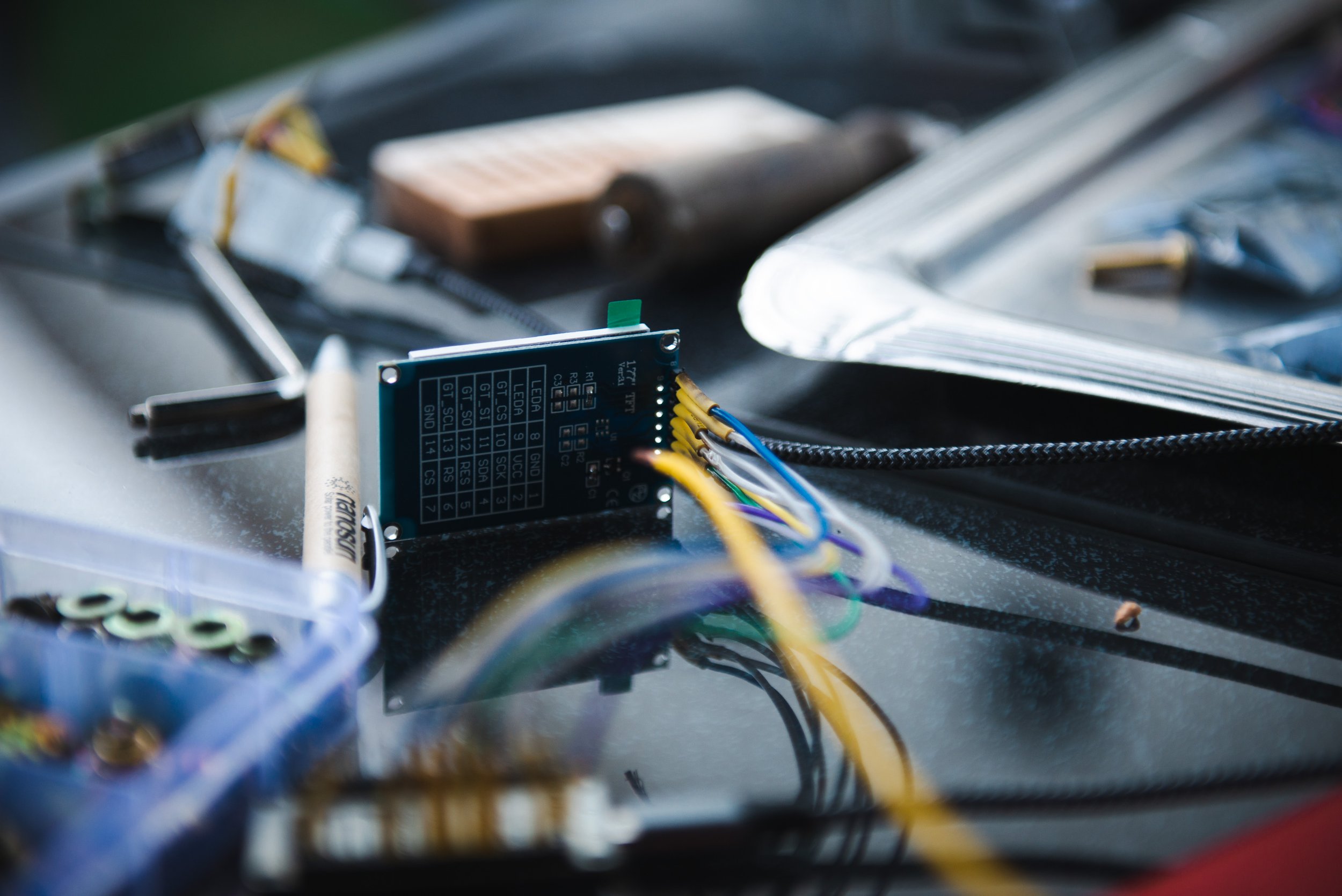
reconnecting: research
monas sensors
Research on the connection of sonification from multidimensional natural data with new light art and performance formats
The focus is on research around the connection of sonification from multidimensional natural data with light art and performance formats. From artistic questions about the concept of nature - in the area of tension to man-made - conceptual food for thought arises: when developing a sound archive from field recordings, the question arises as to whether recordings can also be made below the earth's surface? How does it sound under the turf? How does it sound when it rains deep in the forest floor? To do this, we are investigating the possibilities of different microphone systems in all kinds of floor structures in order to add a new dimension to the archive.
Another question that is based on this is how, in addition to the measured electrical plant impulses, other particularly climate-relevant natural data such as greenhouse gases (carbon dioxide, methane) can be read out with new sensors and orchestrated musically (sonification).
Newly developed sensors allow us to include nature in a comprehensive form in new project ideas, since the retrieved data also enables multidimensional control of sound and light.
We explore the complex possibilities of this pioneering instrument artistically in different environments.
In the further course of the research, this instrument serves as a platform for interdisciplinary collaborations with light artists or dance and performance artists.
According to Leibnitz, monads are the source of inexplicable workings in nature. Developed in the 1920s by C.G. The polygraph technique (electrodermal activity) developed by Jung and Max Wertheimer serves as the basis for this art project. Here, dynamic changes in the conductivity of the selected surfaces are measured (GSR galvanic skin response).
The central idea of the sensor development is to bring data from electrical impulse fluctuations of different plants as well as from different components of the air (methane, CO2, ozone), temperature and light into an audible and visible connection. The data is linked with processed natural sounds from the immediate environment (sonification) and specific field recording instruments are developed from this. The measurement data is thus placed in a new artistic context: an idiosyncratic symphony of nature is created: a specific place, with specific light and weather - right now. As a continuation of the "Musique Concrete", natural sound objects are linked to the multidimensional data.
Technology
The MONAS sensors and receiver were developed on Arduino platforms. Up to 12 different sensor modules can be wirelessly connected to the receiver:
GSR (galvanic skin response) for several plants
climate-relevant gases:
CO2 / carbon dioxide
CH4 / methane
CO / carbon monoxide
O3 / ozone
temperature / humidity / air pressure
wind measurement
light sensor
soil moisture
weight
The sensors transmit wirelessly using the ESP Now radio protocol, which is significantly faster than logged WLAN or Bluetooth and can be configured in both directions. The wireless range is about 100-300 m outdoors.
The sampling rate of the measurements on the Arduino chip is 100kHz. The analogue sensors send a data width of 1024 values. In order to get the most realistic representation of the activity, the data values are only sent to the receiver when a change is recorded.
All sensor modules are supplied with 5V voltage via solar modules and power banks.
The data is read out on the computer and assigned to various custom-made field recording instruments, musical effects, quadrophonic room loudspeakers or video software parameters using software.
In the entire setting, an image and sound landscape of natural instruments is created, which are "played" by the connected plants and the air environment.
Funded by the Fund for the Performing Arts with funds from the Federal Government / #NeustartKultur

